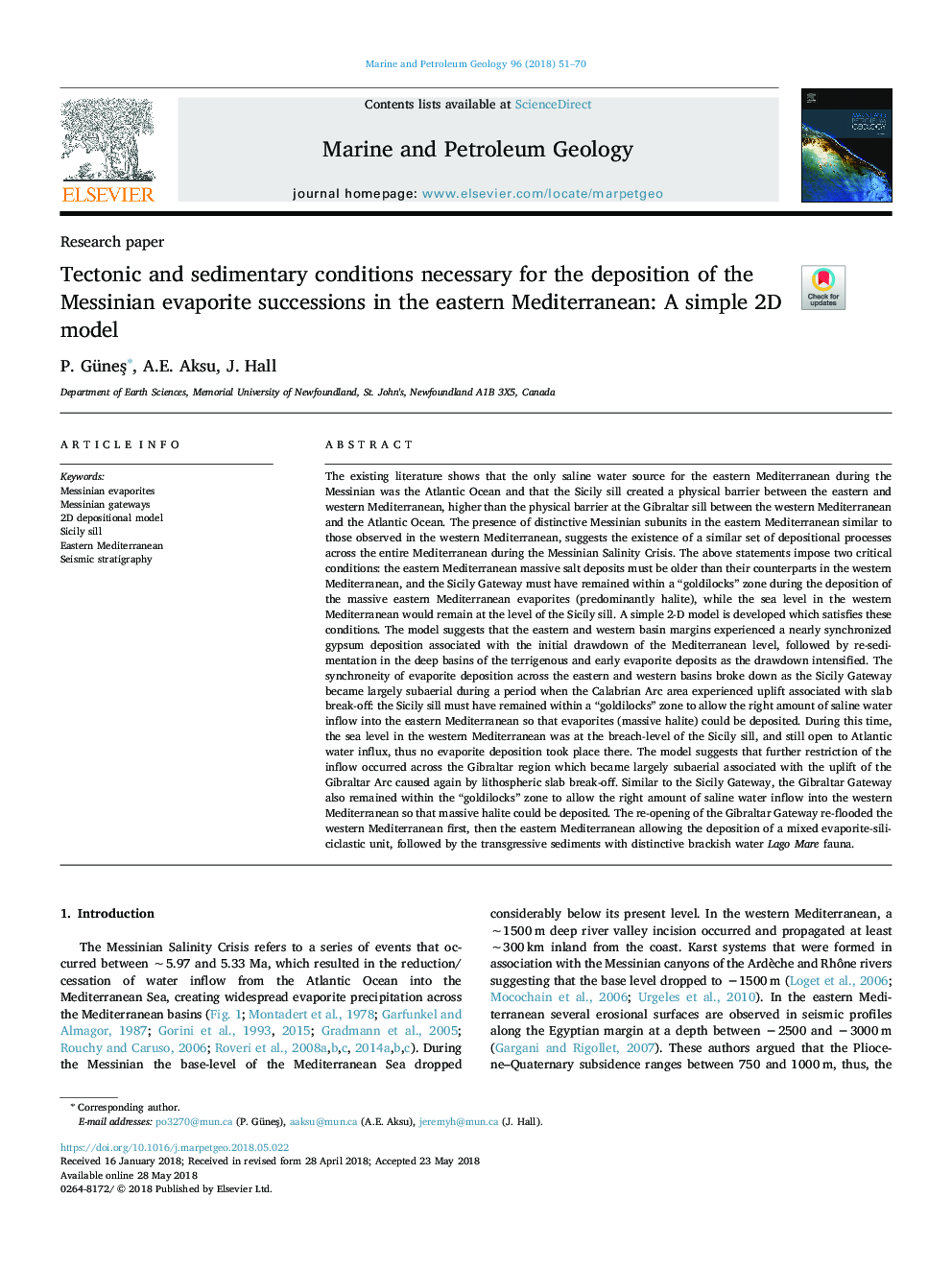| Article ID | Journal | Published Year | Pages | File Type |
|---|---|---|---|---|
| 8908962 | Marine and Petroleum Geology | 2018 | 20 Pages |
Abstract
The existing literature shows that the only saline water source for the eastern Mediterranean during the Messinian was the Atlantic Ocean and that the Sicily sill created a physical barrier between the eastern and western Mediterranean, higher than the physical barrier at the Gibraltar sill between the western Mediterranean and the Atlantic Ocean. The presence of distinctive Messinian subunits in the eastern Mediterranean similar to those observed in the western Mediterranean, suggests the existence of a similar set of depositional processes across the entire Mediterranean during the Messinian Salinity Crisis. The above statements impose two critical conditions: the eastern Mediterranean massive salt deposits must be older than their counterparts in the western Mediterranean, and the Sicily Gateway must have remained within a “goldilocks” zone during the deposition of the massive eastern Mediterranean evaporites (predominantly halite), while the sea level in the western Mediterranean would remain at the level of the Sicily sill. A simple 2-D model is developed which satisfies these conditions. The model suggests that the eastern and western basin margins experienced a nearly synchronized gypsum deposition associated with the initial drawdown of the Mediterranean level, followed by re-sedimentation in the deep basins of the terrigenous and early evaporite deposits as the drawdown intensified. The synchroneity of evaporite deposition across the eastern and western basins broke down as the Sicily Gateway became largely subaerial during a period when the Calabrian Arc area experienced uplift associated with slab break-off: the Sicily sill must have remained within a “goldilocks” zone to allow the right amount of saline water inflow into the eastern Mediterranean so that evaporites (massive halite) could be deposited. During this time, the sea level in the western Mediterranean was at the breach-level of the Sicily sill, and still open to Atlantic water influx, thus no evaporite deposition took place there. The model suggests that further restriction of the inflow occurred across the Gibraltar region which became largely subaerial associated with the uplift of the Gibraltar Arc caused again by lithospheric slab break-off. Similar to the Sicily Gateway, the Gibraltar Gateway also remained within the “goldilocks” zone to allow the right amount of saline water inflow into the western Mediterranean so that massive halite could be deposited. The re-opening of the Gibraltar Gateway re-flooded the western Mediterranean first, then the eastern Mediterranean allowing the deposition of a mixed evaporite-siliciclastic unit, followed by the transgressive sediments with distinctive brackish water Lago Mare fauna.
Related Topics
Physical Sciences and Engineering
Earth and Planetary Sciences
Economic Geology
Authors
P. GüneÅ, A.E. Aksu, J. Hall,
